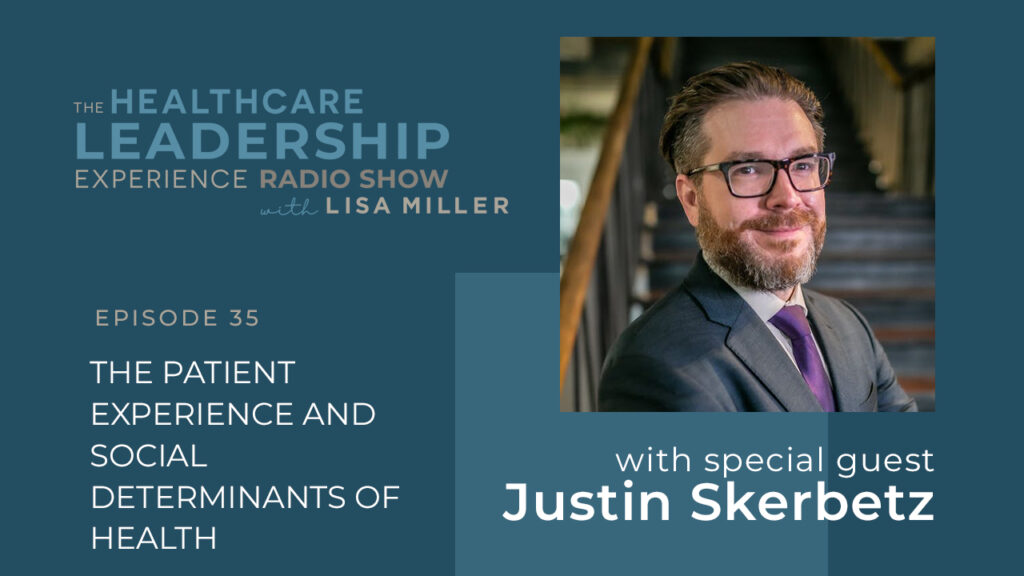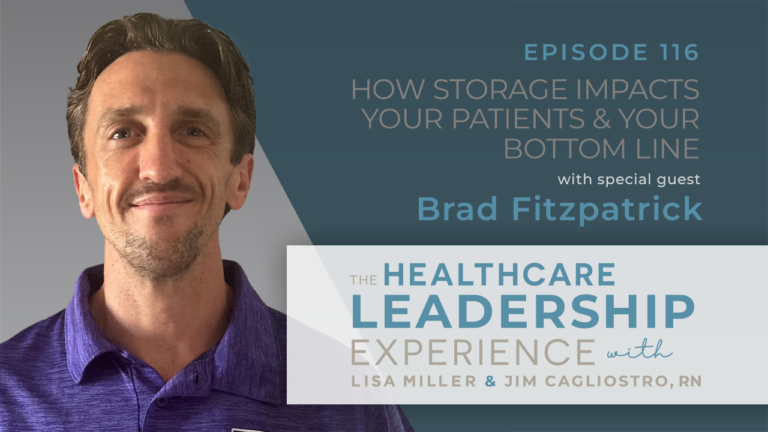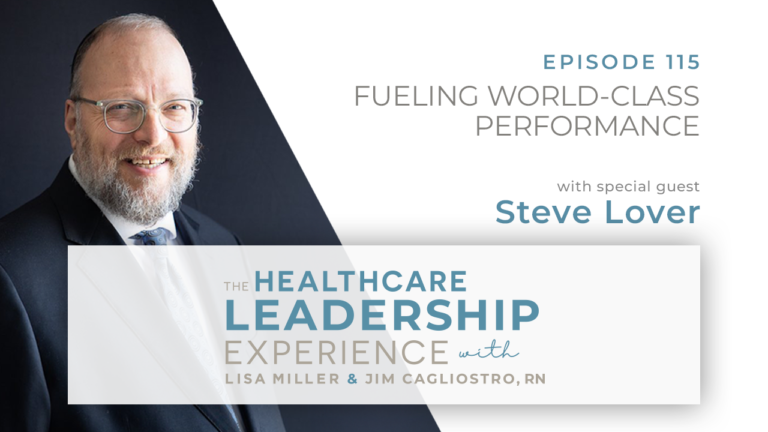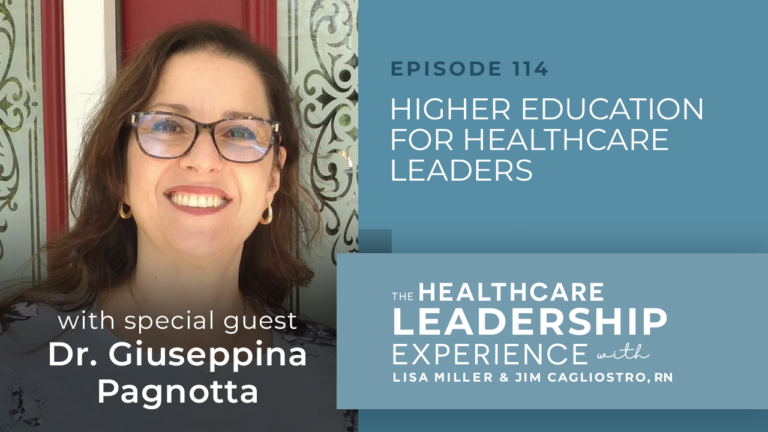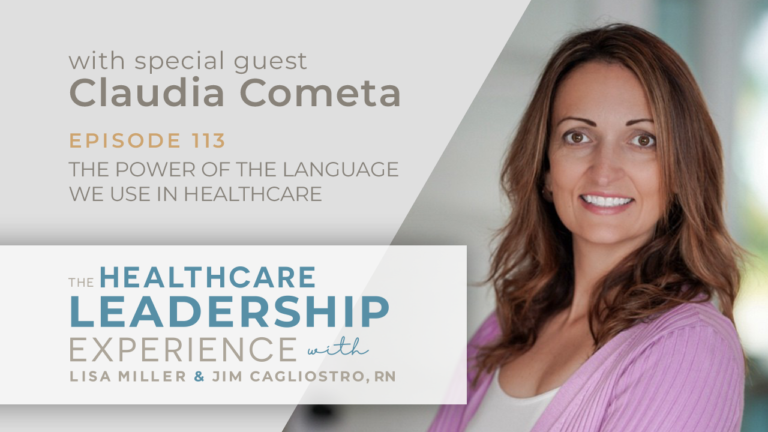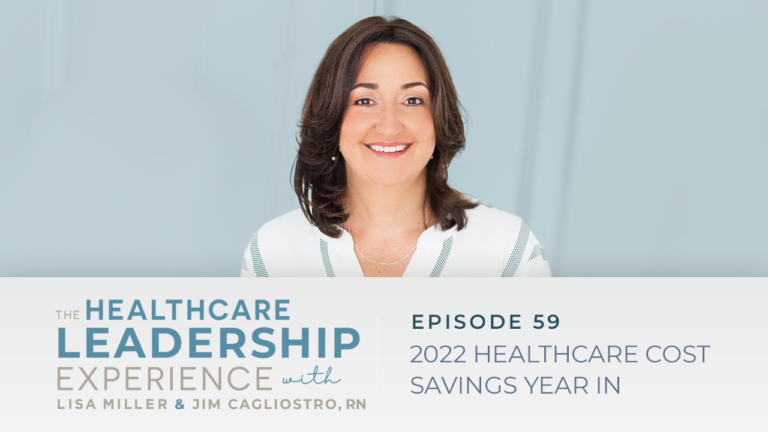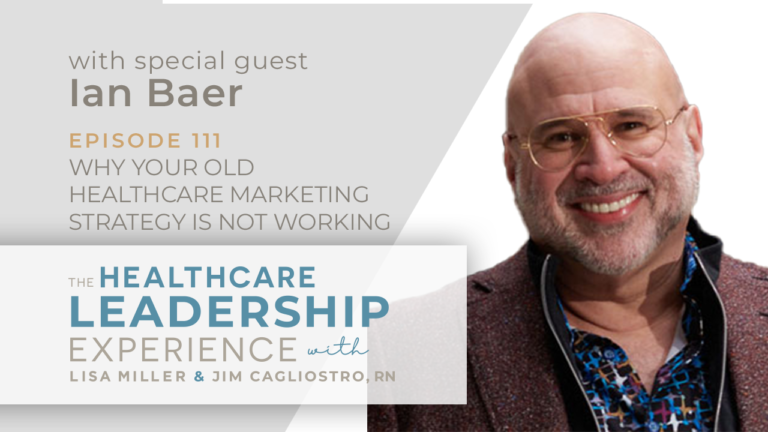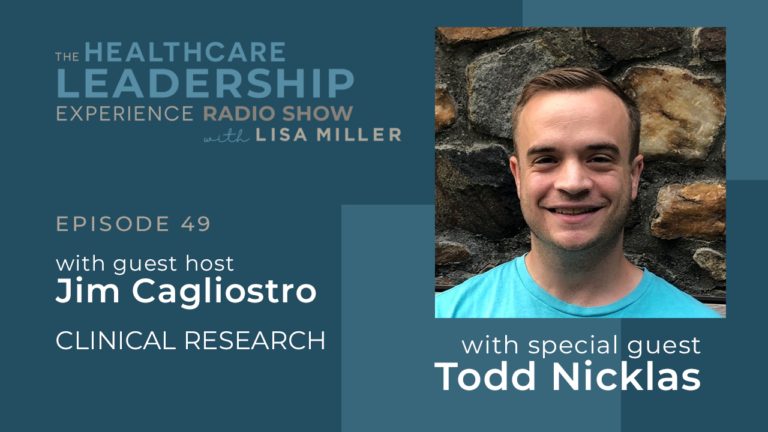Three Steps to Measuring the Impact of a Successful Childhood Asthma Campaign
In Episode 35 of The Healthcare Leadership Experience, Lisa is joined by Justin Skerbetz, Chief Marketing and Communications Officer of Parkland Community Health Plan. Together they explore the patient experience and the impact of Social Determinants of Health (SDOH) on local health communities.
As Lisa observes, ‘’The ROI (on SDOH) needs to be defined in several different ways, not always financially…You can’t expect people that don’t have food, shelter, or security to make sure they’re …going to a doctor’s visit. You have to get them through that journey to healthcare and overall wellness.’’
This episode is sponsored by VIE Healthcare Consulting® which has proudly helped hospitals save $772 million since 1999.
In this episode you’ll hear:
- Justin’s back story, connecting with 10,000 seniors, and how insights into one lady’s personal experience helped to transform his perspective. ‘’It’s the stories that we have to listen to, to understand, versus assuming what those stories are.’’
- How to avoid customer abrasion – and why setting expectations can help hospitals to better manage their ultimate experience.
- Why understanding SDOH in your community can help customers gain access to vital resources – and how one mobile tool helped patients to overcome social isolation during pregnancy. ‘’30% of that utilization occurs between midnight and 4am. That is not historically a time when health insurers are available to their membership.’’
- Embracing change in a customer-centric era and why data on SDOH is vital for patient outreach.
- Three steps to measuring the impact of a successful childhood asthma campaign, and why it’s important to look beyond the short term.
- Why video games and healthcare are closely aligned when it comes to a customer first mentality, and how it helps to move the customer forward to the ‘’next best action.’’
For more insights into the human side of healthcare in the community, listen again to Episode 18.
Connect with Justin via Parkland Community Health Plan.
Connect with Lisa:
📧 lmiller@spendmend.com
📱https://www.linkedin.com/in/lisamiller/
Episode Transcripts
CLICK HERE TO DOWNLOAD THE PDF TRANSCRIPT
CLICK HERE TO OPEN THE TRANSCRIPT
Introduction (00:02):
Welcome to The Healthcare Leadership Experience Radio Show with your host, Lisa Miller. Lisa is an entrepreneur, inventor, advisor, and founder of VIE Healthcare Consulting, the leading healthcare advisory and analytics firm, helping hospitals accelerate their margin improvement goals. Lisa loves to think differently and collaborates with leaders and their teams to solve challenges, and to create new innovative approaches that impact the clinical and business side of healthcare. Our show will bring you leaders and innovators within healthcare and across multiple industries. Be a part of the discussion that will give you a unique perspective, deep insights, and roadmaps to successfully help you navigate the clinical, financial, and operations of healthcare. Your show starts now.
Lisa (00:49):
Hello, you’re listening to The Healthcare Leadership Experience Radio Show on HealthcareNOW Radio. I’m your host Lisa Miller, welcome. We have today, our guest is Justin Skerbetz. He is the chief marketing and communication officer at Parkland Healthcare. We have a great conversation around the importance of interacting with patients, embracing change in the new customer-centric era, and I’m really looking forward to this why video games and healthcare are closely aligned.
Lisa (01:21):
I just wanna give you a little bit background before, uh, we begin talking with Jason. Uh, Jason joined Parkland Community Health Plan in 2019 with more than 15 years of progressive leadership experience in Medicare and Medicaid. Before joining Parkland, Justin ran acquisition strategy and implementation for our multi-state Blue Cross Blue Shield, as well as marketing strategy for a top Medicaid plan. He has overseen successful product launches, expansion in both Medicare and Medicaid with significant enrollment growth while achieving multiple government quality bonus improvement, which is so key today. In addition, Justin has managed multiple award-winning projects, such as websites, marketing automation programs, call centers and analytic platforms and CRMs. Justin, welcome to the show.
Justin (02:07):
Thank you, Lisa. And my whole life has been Jason, Justin, because Jason is my brother. So I actually respond to both names quite often because I’m very used to my mother being like, “Jason, Justin, get in here, uh.”
Lisa (02:21):
(laughs) Okay. Sorry. Thank you. So Justin-
Justin (02:22):
No, no problem. That’s very natural thing for me-
Lisa (02:26):
It’s funny.
Justin (02:28):
… to hear. I love it to be honest with you.
Lisa (02:29):
(laughs).
Justin (02:29):
Yeah. Thank you for having me. I’m excited to talk today.
Lisa (02:32):
So funny, I, I just wanna mention this. As I was prepping for the show, I kept on writing Jason in my head, Jason, but I was looking at Justin. So it’s kind of funny. I’m glad, you know, you took that in stride. So let’s start off the show with your background. You and I have had a brief chance just to get to know each other a little bit. I find it fascinating your background. So can you just give me some of your backstory in your career please? And for the audience.
Justin (02:55):
Yeah. So my backstory is, uh, born and raised in Pittsburgh, Pennsylvania. Grew up with a brother and parents who were very young when they had children and got married. And for me, we definitely grew up in an underprivileged type of environment that then we were able to kind of grow and rise. And through that, my grandparents actually a grandfather owned an insurance agency. And, you know, this is back in the eighties timeframe. So it was a little bit different at healthcare, but I spent many times in their office stuffing envelopes, putting together packages, you know, looking ahead, here we are. Now, these are all the same things that we continue to get. So I felt a lot of the pain from the, uh, broker side of what they were feeling doing that. And, you know, went to college and outside of college, uh, started my career in health insurance at a large National Blues Company and started in customer service, and customer service for Medicare. So I spent better part of a year speaking to probably 10,000 plus seniors about their questions on their insurance. And I think foundationally between my grandparents and that customer service, it really created this connection for me around the customer experience.
Lisa (04:11):
I just wanna jump in. I want you to continue. Recently, my mom got her Medicare statement, and she had questions and she’s like, “I’m gonna call them.” (laughs) And I was like, “Okay, mom.” It was, like, it was, you know, her benefit was a little bit off and I’m thinking, wow, I don’t know if I, I would wanna be the person on the other side of that phone call, ’cause as I shared with you earlier, I get iPhone questions from her, but that’s amazing that you’ve spoken to over 10,000 seniors. And what a valuable experience. Because really, you know, even though I’m kind of making a little light of it, they do need caring people that’ll help them through their questions and be patient, and, you know, sooner or later we’re gonna be there as well, right?
Justin (04:50):
Yes. I totally agree. And, you know, one of the phone calls that actually I remember to a T is, uh, a lady called because she got a disenrollment we were going to disenroll her-
Lisa (05:01):
Mm-hmm (affirmative).
Justin (05:01):
… since, you know, a while ago in Medicare advantage for a payment delinquency. And when you talk to these seniors, you’re hearing their voice, but you’re seeing your grandma.
Lisa (05:10):
Absolutely.
Justin (05:11):
And the discussion led to why she was being delinquent with her payment. She struggled, struggled to walk to her mailbox. You know, this was before digital platform of paying things and she couldn’t get her bill. And, like, that really takes the heart. You know, you feel that. And, you know, one of the success things out of that was not just, okay, well, you know, like, we can take your payment over your phone, we connected her to a program that they call, um, it was people able to lend support to pals. And it was just a volunteers program, where somebody was able to stop by her house once a week and just bring her mail up to her. And to me, that’s just such a, it’s a basic thing. I don’t even, you know, I don’t think twice about going to get my mail, but for this person it meant keeping her healthcare coverage.
Lisa (05:58):
I think that’s one of the best stories I’ve heard, ever (laughs). It’s about this personalized care. It’s really about helping patients. And it’s the stories that we have to listen to, to understand versus assuming what those stories are, and just treating them like a number. And I just love that you really were able to identify the root cause and it’s a simple solution. So, uh, I did interrupt you, please continue about your career.
Justin (06:24):
No. I mean, that’s part of where, you know, through that customer service, I was able to get into our, our marketing area for Medicare. And it was a small group, there was only two or three of us at a time working on this as we grew to be what is a large, large thing now with Medicare Advantage. And I think throughout that customer service and building my career in marketing, I learned that, you know, healthcare is unnecessarily complex. And so much of it to simplify to me, came down to that customer experience to then be able to focus on that access. But that customer experience, you know, really came back to effort. We created way too much effort for those customers to take that next step. My career has really been built on how to ease that effort of our members.
Lisa (07:15):
So I wanna jump in because I have lots of questions and hopefully we can get it all in today. What is, and, you know, it seems like an obvious question, but I think there’s a lot to it. The importance of interacting with patients, we’ve talked about it a little bit, but if you can expand that, you know, the benefits, the opportunities and the challenges too. You know, sometimes when we think of interacting with patients or getting their feedback, and we think, oh, I don’t, no one wants to get bad news or look at bad reviews or, but the fact is the real opportunities for change and that goal is in that feedback, whether it’s good, bad, or to learn from it, like you did with the example you just gave us. So can you talk to us about the importance of interacting with patients, Justin?
Justin (07:57):
Yeah. I mean, so, you know, for us, it’s all about what our customers are saying about us from a member’s perspective, or even the, you know, providers that we work with. We want to hear those insights, because those insights are what drive the actions for us. And so much of the aspects that are done in healthcare are based on feelings. I think, I feel, we should. And that data to support it is sometimes hard to get or digest, but for us it’s a case of how we can continue to hear what they’re saying to justify the things that I think I feel. And it really comes down to then the fix is from talking to your member is all about setting the expectations for them. You know, you hear a lot in the marketing world of customer abrasion, too many communications, they get too many things, that’s true. And sometimes it’s hard to fix that in a healthcare world where you’re relying on 10, 15 vendors who support you in different efforts, whether it’s a disease outreach, you know, population health, might be a rewards program. They’re all wanting to talk to your customer. And if you can help set expectation at the beginning, you can better manage that ultimate experience for them.
Lisa (09:20):
So can you give some examples or maybe one example of ways that you’re interacting, you know, something that’s been successful because it’s true, you’re using a lot of different service providers, and they’re getting that information. Is there one that’s been more successful, Justin, than-
Justin (09:38):
Yeah.
Lisa (09:38):
… than another?
Justin (09:39):
Yeah. I mean, um, you know, two things really come to mind and from a brand side of things in marketing and then from a demand side of things in marketing. So from talking to our members, we heard a lot about, they weren’t aware of the ability that they could go to various providers and doctors. You know, they thought we are an integrated health plan, but we have access to multitude of hospitals providers. And so getting that message out, and then the benefits that we offered, people were not aware of it. How we, um, got them to understand that and access those, those were big things, so we started doing different types of campaigns integrated into our call scripts to help people become aware. And on the demand side of things, you know, one of the biggest things we talk about and look at is around social determinants of health.
Justin (10:27):
So in short access to resources for folks. And it’s one thing to be able to, you know, provide the ability for someone to find that help or get help, but to put it into their day-to-day livings, we actually worked closely with an organization who has a mobile application that works in hand in hand as a, almost an advocate for pregnant moms is where we worked with. And our pregnant moms had access to this application, and it was an extreme handhold situation to get somebody to download it, sign up, and start to use it. But what we’ve seen from that is it’s addressed this need of social isolation. Specifically it occurs during pregnancy. And by having this tool and this application, people are going in and it’s very simplified of hitting a smiley button or frowny button of how you feel that is then triggering off outreaches.
Justin (11:25):
So it’s almost working as a coordinator to, well, should this person be working with our clinical team right now? Or are they very stressed out because they don’t know how to get a breast pump. They’re not sure of how to pay for or that — or is there something more emotional and we need to get to a behavioral aspect of things. And this, uh, program has really helped us understand more of our customer feedback, but provide real time access to that need. And, uh, the most interesting stat that I’ve seen out of that tool, we see almost, like, 30% of our utilization occur on that app between midnight and 4:00 AM. That is not historically a time when health insurers are available to their membership, but it’s a time when the membership needs and is up in thinking.
Lisa (12:18):
That is an extraordinary use of data, because you’re not up, like you said, but in fact, if 30% are up for whatever reason, then that may be some way that you can start supporting live or supporting via the app. But, you know, that’s why data is really key, ’cause you’ll get to see insights like this you would never see, Justin.
Justin (12:36):
Yeah.
Lisa (12:37):
So I also wanna mention something else that, you know, you brought up. And this, again, it’s this personalized, customized use of, you know, healthcare, whether it’s apps and taking that data, it’s very specific. It’s not generalized. And I love the fact that you talk to out an app for pregnant moms and those are the kind of interventions we need. And it’s almost, like, a virtual triage, right? You’re triaging these expectant moms and where do we need to infuse care. And I think that’s just brilliant.
Lisa (13:08):
And if you’re just tuning in now, you’re listening to The Healthcare Leadership Experience Radio Show on HealthcareNOW Radio. And I’m Lisa Miller, your host today. I’m joined with Justin Skerbetz, he’s the chief marketing and communications officer at Parkland Health Plan. We’re having a great conversation about patient engagement. And we’re gonna continue in a moment.
This show is sponsored by VIE Healthcare Consulting, the leading healthcare advisory analytics firm, helping hospitals accelerate their cost savings and margin improvement goals. Learn more about VIE Healthcare at viehealthcare.com.
Lisa (13:41):
Justin, we wanna continue this great conversation. Can you share with the audience, just your views and, and just you could have a conversation about how we can embrace change in the new customer centric error and what does that mean to you?
Justin (13:56):
Yeah, definitely. You know, when I came to Parkland just a little bit over two years ago, it was probably the first time I was actually in Texas. You know, I worked for a single organization, different departments for better part of 17 years. And it was a big change, but something that was really intriguing to me was these thoughts that were happening of a community health plan, and a community hospital that really, you know, focuses on serving the underserved. And it’s a safety net hospital. And it was the fact that growth, membership growth, revenue, extremely important, but the impact on, you can make to the community is kinda what this organization is all about. And to me that was just something a little bit different. And it is holding true throughout my first two years. And it’s allowing me to think about things in a different manner.
Justin (14:55):
So when we talked about, you know, the impact we can make to somebody’s lives. For us, it’s how we can take aspects of resources, social determined health by taking the data that exists in our community and turn it into insights for us to focus in a personalized level. And then we bring that forward to the actions we take. You know, this might be phone outreach, mailer, text, online, app, any of those different channels, but it’s taking that outreach, those actions and then looking at the results. And for us, results kind of dive into three different things. You know, campaigns are very important for us, right? How is somebody responding to this response rate? What vehicle are they using? Did they take the action? But then we measure it against that health outcome. We have a fantastic asthma program. And so much of that we can look out and see if somebody is taking their medication, if they’re staying out of the hospital. And that success can be tied back to the campaign. But what we’ve been able to do from that vision of really focusing on the impact we make to the community is tie that back to the community needs. And as a county hospital, where we are tasked with doing a community needs assessments.
Justin (16:13):
So not only do we do our campaigns and focus on those health outcomes, how is it bettering that neighborhood? That census track area, that was in those data points that helped us to identify insights that this location, this neighborhood has a history of higher asthma rates than the rest of the county we serve.
Lisa (16:36):
Have you been able to really quantify that? It seems like that asthma program is, is doing fantastic. Can you just give our audience, like, a little tidbit of information on how you were able to quantify that, Justin?
Justin (16:48):
Yeah. I mean, quantification of that, we’ve looked at the dollar amounts, you know, the cost to spend the program, and then savings we’ve seen it, but we’ve also quantified that back to looking at the, and this is where we work closely with an innovation area inside of our organization as a whole, that is (laughs) just extremely smart group of data scientists that can see the trends that over time inside various neighborhood levels, and see the impact since we’ve launched, you know, the asthma program probably three plus years ago that has shown a decline in the number of children who has asthma, because there’s the programs we offer, right? To help them. But then on the other side of the integrated health plan, there’s the programs that the hospitals creating in the neighborhood. So you bring those two together and that’s how we’re really starting to judge ourselves of change.
Lisa (17:40):
So before we get to our final question discussion, I have an impromptu question. And it’s one that comes up often, I feel, or it’s a misnomer, but as hospitals and, you know, payers, providers have to invest in social determinants of health and programs and invest make those investments. You always think like, well, it’s gonna be just so much money. You know, we’re not gonna get an ROI, but you know, the ROI, it can be defined not just, it, it needs to be just defined in several different ways, not always financially, but that being said, it is an investment. It’s a big investment, right?
Justin (18:14):
Mm-hmm (affirmative).
Lisa (18:15):
On the front end. Now, I, I personally think that, and, and it has enormous payoffs for a number of different reasons, invest in your community, and, is number one and that those social responsibilities that, that we have as healthcare providers and payers, but can you speak to a little bit of that specifically to, like, are there obstacles when you’ve gotta create campaigns, or you’ve gotta fund or be innovative? Like, there is an investment you’ve gotta make a business case for that, right, Justin?
Justin (18:43):
Yeah. I mean, one of the differences between, you know, being a local plan and a large national is, you know, we have shareholders as well, but they’re not directly, you know, owners of the organization, it’s the community. And for us, you gotta look at that return being almost the basic needs of life, right? So-
Lisa (19:04):
Absolutely.
Justin (19:04):
Personal health is a basic necessity. Sometimes we need to have food, shelter, clothing to then be able to think about how we can help them with access.
Lisa (19:15):
That’s right.
Justin (19:16):
And that access then becomes being cared for. And it’s only rarely then at that point where we can help them focus on other important aspects of life to live their best.
Lisa (19:26):
Right.
Justin (19:27):
And measuring it back to the return for us ties to the impact we’re making to the community.
Lisa (19:33):
Yeah. I mean, you make a really good point, right? So you can’t expect people that don’t have food, or shelter, or security, then all of a sudden to make sure they’re taking their medications (laughs), or going to the doctor’s visit. So you’ve gotta get them through that journey to healthcare and overall wellness, but you gotta get them and support them foundationally. So, so true.
Justin (19:54):
Yeah. So much of that ties back to just the short-term campaign aspect sometimes blinds us to what real change can occur over a longer period of time.
Lisa (20:05):
Absolutely, that’s so true. So I wanna spend our last couple minutes talking about why video games and healthcare are closely aligned. I’m fascinated (laughs).
Justin (20:17):
(laughs) So this kind of ties back to my background. And when I went to college, I had the opportunity to do a dual degree, and, you know, focused on marketing and business degree, but I also did a degree in video games. It’s been a kinda lifelong passion playing games, understanding them, and the concepts behind the development aspect. And, you know, when I left college, I didn’t expect to be in a customer service role talking to seniors. I thought I’d be out in California, somewhere building video games, living the time of my life doing it. But that influence I had in that degree has never really stopped. So for me, the way to process everything that we’re doing in healthcare has always been tied back to how a video game is built. And when you think about this, some of the gamification that occurs and is going on with, you know, rewards programs and other stuff, takes shape, but it’s always been around for video games, how the basic aspect of it is, you know, sound, graphics, the player and settings.
Justin (21:20):
And so when you talk about the sound for me, it’s always been that outreach, that noise that occurs to our membership. And the graphics has always been one of those things where it’s the simpler, sometimes is the better, right? You talk about that. And the settings aspect, think of some of the games that exist on your mobile app. They’re simple pushing of a thing up and down, but they’re extremely fun. And for the player, you know, when I look at, you know, a game and you’re playing it, that’s our customer. So everything you’re doing in that game is to drive that player forward, progress that story. That is a customer-first mentality that has just been applied to the things that we do and think about. And then when I always talk about that settings aspect, it’s the objective. You know, every health plan to every remember probably has an objective, a need to drive a next best action. But if you don’t have the appropriate setting that has the foundational sound and visualization aspect to it, you’re never gonna be able to help that customer move forward to what you feel is the next best action.
Lisa (22:28):
I love the analogies and it’s true, because it is such a site, you know, graphics, it’s getting them through point A to point B. And I love that approach. And I actually think there’s probably another conversation we can just have on the gamification or this, the helping the engagement being, you know, innovative and taking creativity in the next level with engaging. So I think we’re gonna have to have a follow-up conversation, Justin. So as we wrap up, is there anything else you’d like to close with in terms of your vision or what you’re looking to accomplish and how people can get a hold of you if they just wanna talk further?
Justin (23:04):
You can always go to parklandhealthplan.com. And we have all of our leadership information out there to get in touch with us. But lastly, I’d, I’d love to just close with kind of the everything we talked about to me really just wraps around how health plans can really focus on getting their message across, whether it’s through the reach, the engagement or how they connect, you know, finding the right people all the way to capturing the, their limited attention, and establishing trust with them.
Lisa (23:34):
Mm-hmm (affirmative).
Justin (23:35):
To really then begin focusing on how they address those barriers. And we’re not really talking here yet about social determinant of health, these are the basic barriers of how someone can be motivated. And through that, that effort aspect really does fall into what we wanna help our customers with. And that’s helping them with their intentions to the actions. Sometimes we all need just a little bit of nudge, and sometimes that nudge is how we reduce that effort.
Lisa (24:04):
Yeah. I love that. It really is about the nudges. Thank you, Justin. This was a great discussion and look forward to having you come back in the next few months.
Justin (24:14):
Great. Thank you, Lisa.
Lisa (24:15):
You’re welcome. So thank you everyone for listening to The Healthcare Leadership Experience Radio Show on HealthcareNOW radio. I’m Lisa Miller, the host, and please join us and other host on the network of Healthcare RadioNow, there some great, great shows. And of course you can listen to The Healthcare Leadership Experience on Apple Podcast and other podcast apps. If you’ve got any suggestions of shows or those you’d like to be on our program, please reach out to me. Thank you.
Outroduction (24:43):
Thank you for joining Lisa Miller for this episode out of The Healthcare Leadership Experience Radio Show, sponsored by VIE Healthcare Consulting. If you enjoyed the show subscribe so you can automatically get notified when new shows premier weekly. Don’t forget to leave us a review, some more healthcare leaders like you can discover us. This show is on HealthcareNOW Radio, Apple Podcast, Stitcher, Spotify, Pandora, and other major podcast platforms.
To reach out to Lisa personally, you can join the conversation on LinkedIn where Lisa continues to have discussions on the business of healthcare. You can find links to Lisa’s other social platforms in the show notes or at viehealthcare.com. The Healthcare Leadership Experience Radio Show is the think differently communication for healthcare leaders. And we are honored to have you tune in. Join us next week for another episode of The Healthcare Leadership Experience Radio Show.
Leah (25:36):
Hi, this is Leah. You are listening to my mom’s podcast, The Healthcare Leadership Experience.
Fernando (25:43):
Hi, this is Fernando. If you’d like to speak with my mom, just email her.
